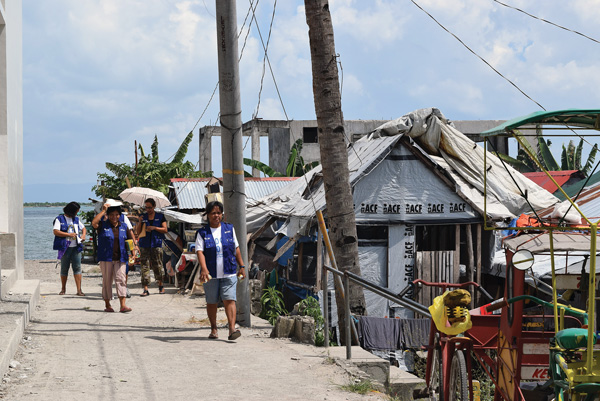Tablet reporter Maria-Pia Negro Chin and three other Catholic journalists recently spent five days in the Philippines, interviewing those most affected by Super Typhoon Haiyan, which cut a 30-mile-wide swath of destruction there on Nov. 8, 2013. The reporters visited Manila and the island of Leyte, as part of a Catholic Relief Services (CRS) reporting fellowship to see the aftermath of the typhoon and the recovery process the people of the Philippines are still undergoing, and to report on how climate change is affecting the poor and most vulnerable. This is the first of her reports that will continue in The Tablet for the next few weeks.
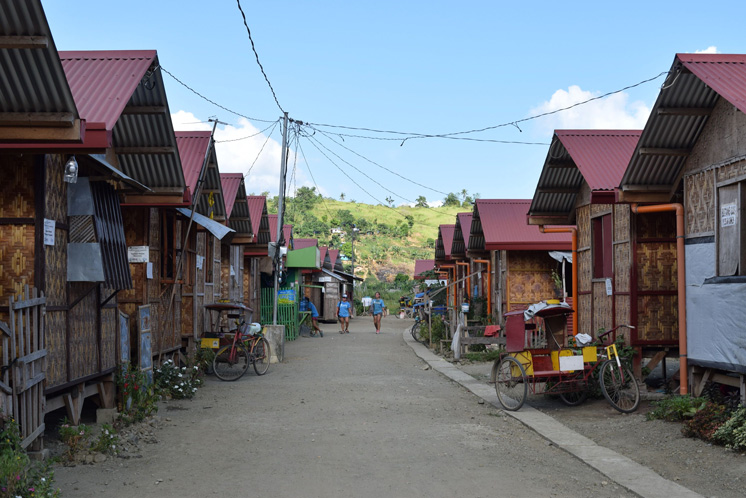
“Days after Typhoon Haiyan, Tacloban was very hopeless,” said Cyrill Malinao, captain of Barangay 54 in Tacloban City, one of several communities hit by Category 5 Super Typhoon Haiyan that devastated the Philippines on Nov. 8, 2013.
Nationwide, the death toll from Haiyan (also known as Yolanda) was approximately 6,300. The typhoon affected nearly 12 million people, displacing close to 920,000 Filipinos, destroying thousands of houses, damaging crops and businesses.
Tacloban, on the island of Leyte, was reduced to piles of rubble and mud. In the aftermath, communities rallied together to move forward with help from the local church, NGOs and Catholic Relief Services, the international humanitarian agency of the Catholic community in the U.S.
Two years after Haiyan, the area is sprawling with new buildings but the process of rebuilding people’s lives is still underway.
Many neighborhoods – or barangays – were deeply affected by the storm surge brought by Haiyan.
Malinao shared how 19 villagers saw seawater engulf the area and reach the second floor of the building they were in. He lifted people so they could hang from the roof beams. As they saw the waves, they prayed to the Santo Niño (Child Jesus) and sang hymns to atone for their sins. After three hours, the water subsided and they climbed down. Then, they tried finding their relatives and neighbors and helping the injured.
“We spent six days with no food, no water” or medicine between Haiyan’s landfall and the time relief organizations could reach them, Malinao said.
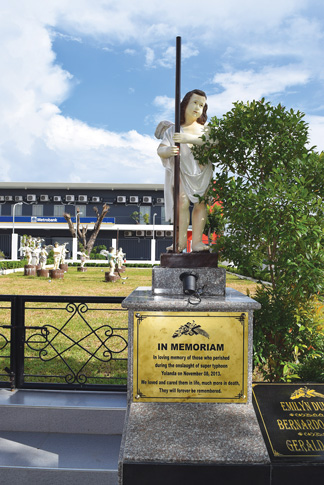
There were 49 casualties in the barangay, which used to have 917 members, he said. The survivors shared whatever food they could find.
“I’m thankful to CRS, especially their housing and cash for work (program). It was a big help to give food to the people,” he said.
A CRS subsistence livelihood program included cash for work or assets for people cleaning the immense amount of debris. Other CRS emergency relief included supporting 40,000 families with shelter kits, access to clean water, communal sanitation facilities and hygiene kits.
Tulio Mateo, program manager for disaster risk reduction and urban planning with the Tacloban Typhoon Haiyan Recovery Program, said CRS Tacloban is now working with the government and at the household and neighborhoods level to tackle ways communities can plan to mitigate the impact of future disasters.
A key point is to improve infrastructures, rebuild houses to withstand the region’s severe climate and help the displaced find dignified housing options. This includes grants for renting an apartment, cash grants to repair damaged houses and transitional shelters for those in “no-dwell zones” 40 meters from the water.
After the emergency phase, CRS started implementing recovery efforts, which included providing 20,000 households with shelter support. CRS reached this milestone in October. Shelter support helped 3,000 families in Tacloban City, 10,000 families in Palo and 7,000 in Eastern Samar.
(Story continues below)
She recalls the crowded space with little privacy and poor ventilation. The school – not originally designed as an evacuation center – had one latrine for 40 families, she said.
Corales and another CRS-USAID beneficiary were instrumental in finding land for the relocation site and for mobilizing evacuees. She moved on Oct. 17, 2014.
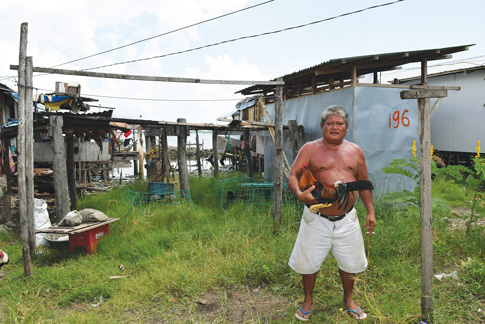
“Everybody is nice and it’s quiet,” she said. “Now there is a space for our children to play.”
Because of her initiative, Corales was elected community president of the temporary settlement. Before Haiyan, she could not have imagined this but now feels proud to help make things better.
The government is supposed to help resettle the displaced and those living in informal settlements. Most permanent houses would be an hour north from Tacloban but the process has been slow.
CRS’s goal is to support families in Leyte and Eastern Samar to rebuild their lives and communities by moving “from recovery to development” in household infrastructure, livelihoods for the most vulnerable, community disaster risk reduction and fostering partnerships that communities can work with in the future.
As usual, CRS has a close partnership with the country’s Caritas relief organization. Staff said the collaboration in the nine affected dioceses was crucial.
“When we came, the Church was here, so the ability of CRS to respond and mobilize parish groups and the armies of volunteers that they put together after Haiyan” was quick, said Josh Kyller, CRS Philippines emergency response coordinator.
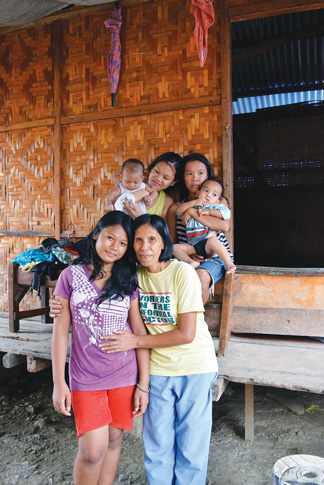
Support also came from U.S. Catholic communities, he added. After the typhoon devastated the region, the faithful of Brooklyn and Queens donated $70,000 to the Archdiocese of Palo and the Diocese of Borongan, said Father Patrick Longalong, a Filipino priest who serves at St. Francis De Sales parish, Belle Harbor. New Yorkers also gave money to Catholic Relief Services during a diocesan collection to fund efforts in the Philippines.
“CRS is doing a lot of relief efforts on the ground not just rebuilding but… helping to recreate livelihoods,” Father Longalong said.
In addition to training people to find sustainable livelihoods, communities like Barangay 54 have newly trained community members teaching people to use latrines to prevent illnesses. They have monthly coastal cleanings and teach people about the importance of the environment, health and sanitation.
Community leaders also participate in disaster risk reduction programs including emergency drills and evacuation procedures. “Everyone in the barangay needs to know what to do” when the next typhoon strikes, Malinao said.
